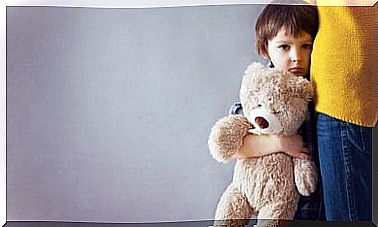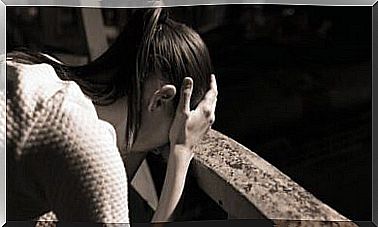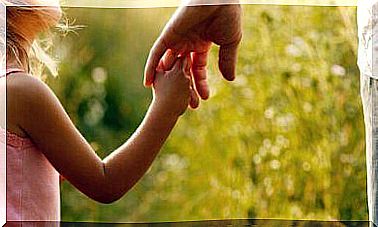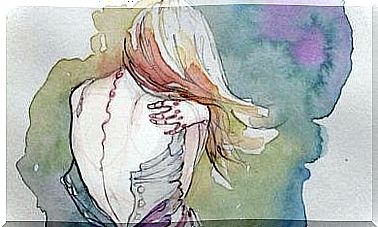Depression In Children: A Child’s Tears Are Knives In The Heart
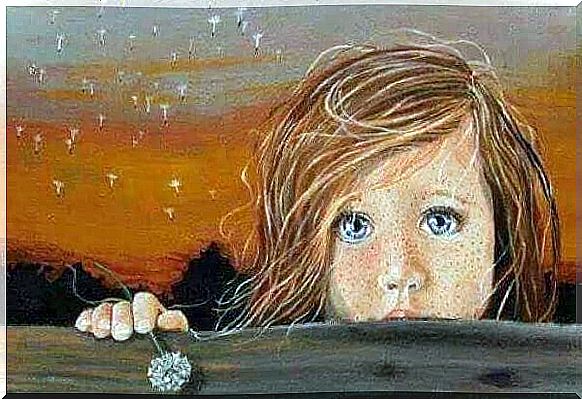
Depression in children exists, although it is relatively unknown. Sad children who cry, who do not smile, who are constantly angry and who do not enjoy life. Children who live their lives drowning in anxiety. Children who see their innocence are covered by the horrific monster that is depression.
Because in the end, it is the case that there are children who suffer from deep grief. Children who cannot smile because their reality has committed themselves to pause their innocence. It does not seem real. For the image we have of childhood is that of children who smile, are happy and playful.
When we see a child who is serious and depressed, we strive to tell him that he should not be sad. We say not to cry, to smile. This is the first big mistake.
A depressed child maintains an internal dialogue that is rarely expressed in plain language. Some of the questions it will ask itself are: How can I force myself to feel better? Why do people insist that I smile, play, not cry and never get angry? I can not stop feeling annoyed, why is that? Why is everyone looking at me strangely? Maybe I’m weird, and it’s not even worth the effort.

Depression in children exists and has distinct signs that can help us discover that something is not right in their inner emotional life. Some of the symptoms are similar to those found in adults. This includes, among other things, frequently manifested sadness as well as a deterioration in academic performance. This is comparable to poor work performance in adults.
But a distinct aspect is that irritability and aggression are common traits of depression in children. We also tend to find somatic complaints such as stomach pain, headaches, muscle aches, etc.
We can also see how darkness obscures their motivation and desire to play or do different activities, that they do not want to eat or sleep properly, or that they suffer from a lack of general energy.
A child suffering from depression will probably not be able to concentrate, think or make decisions. It can actually cause thoughts of death and even try to take their life.
If you observe five or more of the mentioned symptoms, a specialist will probably diagnose depression in children. Nevertheless, you must remember that certain states of apathy, contradiction or sadness are completely normal.
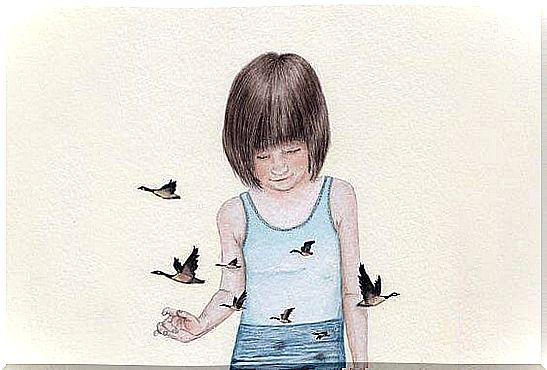
In fact, we should respectfully respect the apathy or sadness of children. We often insist on telling them to be happy without understanding what is causing them discomfort. This means that we will convey the message that sadness, frustration and anger are not normal emotions; that they are worthless feelings.
Let us consider what this means for a child or an adult. Is it not normal to be sad about a loss? Don’t we all feel a little annoyed sometimes? Are these emotional states useful for realizing certain things?
It is also possible that we observe some motor agitation in depressed children, which is referred to as agitated depression. The child can not sit still, but seems to have ants in the brawl. It twists its hands, staggers constantly, drums with its fingers…

They seem to run on batteries that are always fully charged. This condition should not be confused with hyperactivity. Therefore, it is always important that a specialist observes any other symptoms in order to make a correct diagnosis.
The equivalent of agitated depression can be seen in slow depression. This causes the child to speak and move in slow motion. You can not talk to it and you have to constantly repeat questions. The child’s subjects are not varied and he remains silent and still for very long periods of time.
Another clue may be that the child has very low or poor self-esteem or self-esteem. The child may think it is useless or naturally deficient. It may even try to magnify the mistakes it makes.
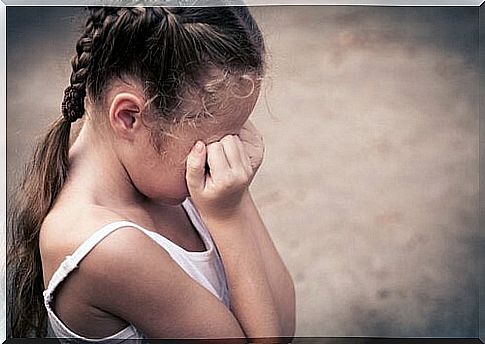
Francisco Xavier Mendez, a Spanish child psychologist, presents ten ideas for promoting smiles and joy in children suffering from continuous sadness.
- Set a good example: smile, show a good mood, enjoy leisure and holidays, think aloud in a reasonable way, etc.
- Help kids have fun and feel good: Schedule enjoyable and fun activities, invite their friends home, surprise them with innovative and attractive plans, highlight their accomplishments, remember their preferences.
- Protect them from unnecessary suffering: take care of their health (vaccinations, sleeping habits, hygiene, nutritional intake, etc.), prepare them for stressful situations (such as the start of the school year or the loss of a family member).
- Promote a harmonious environment within the family and at home: show your love with words and actions, promote communication within the family, avoid quarreling between parents in their presence, etc.
- Educate them with affection and coherence: behave according to the environment, establish reasonable rules of conduct and demand survival, be comprehensive and flexible, cooperate with the school, etc.
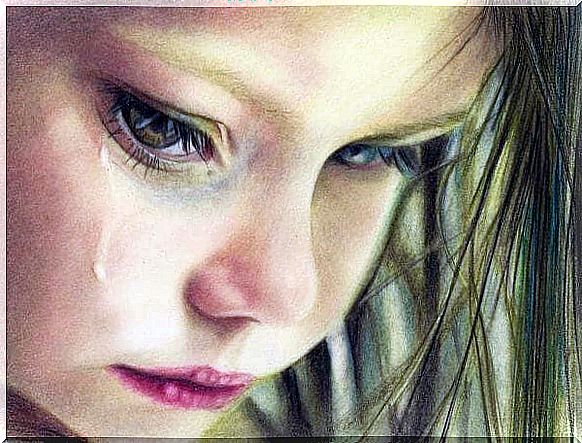
- Raise their qualities, hobbies and interests: let them try team sports, arouse their interest in reading, music, theater, film, collecting, crafts, etc. Encourage them to try enriching experiences such as new tastes, sports, games…
- Train them to deal with frustrations: do not comply with their irrational demands, ignore outbursts of anger, teach them to wait their turn, gradually postpone the fulfillment of their postponed requests, progressively postpone the reward, get them to share their toys and belongings.
- Make them responsible, not guilty: value your study effort, not their grades or awards. Set realistic goals and congratulate them on reaching them. “Congratulations on your rating!” is better than “Next time I want to see the A”.
- Form a rational style of thinking: avoid labels and absolute language ( You are bad. You never do this. ). Instead of providing a solution, make them think about it ( What could we do to solve it? And what else?) Talk to them, dismiss their irrational ideas and beliefs.
- Strengthen their self-esteem: teach them basic skills such as how to bathe and dress themselves, how to cook and how to handle money. Give them a chance to practice. Help them with everything they need, but do not solve the problems for them. Let them gradually participate in the decision-making.
However, if we see the symptoms listed above in a continuous way, we should talk to a specialist to find out if it is depression in children. They will work with the different aspects we wrote about above. This will shine a light on the amazing smile that every child should have on their lips and in their heart.
Children’s emotional health is not something that turns out to be magic. This is something you need to take care of. That is why we must not forget that it is easier to raise strong children than to repair broken adults.


